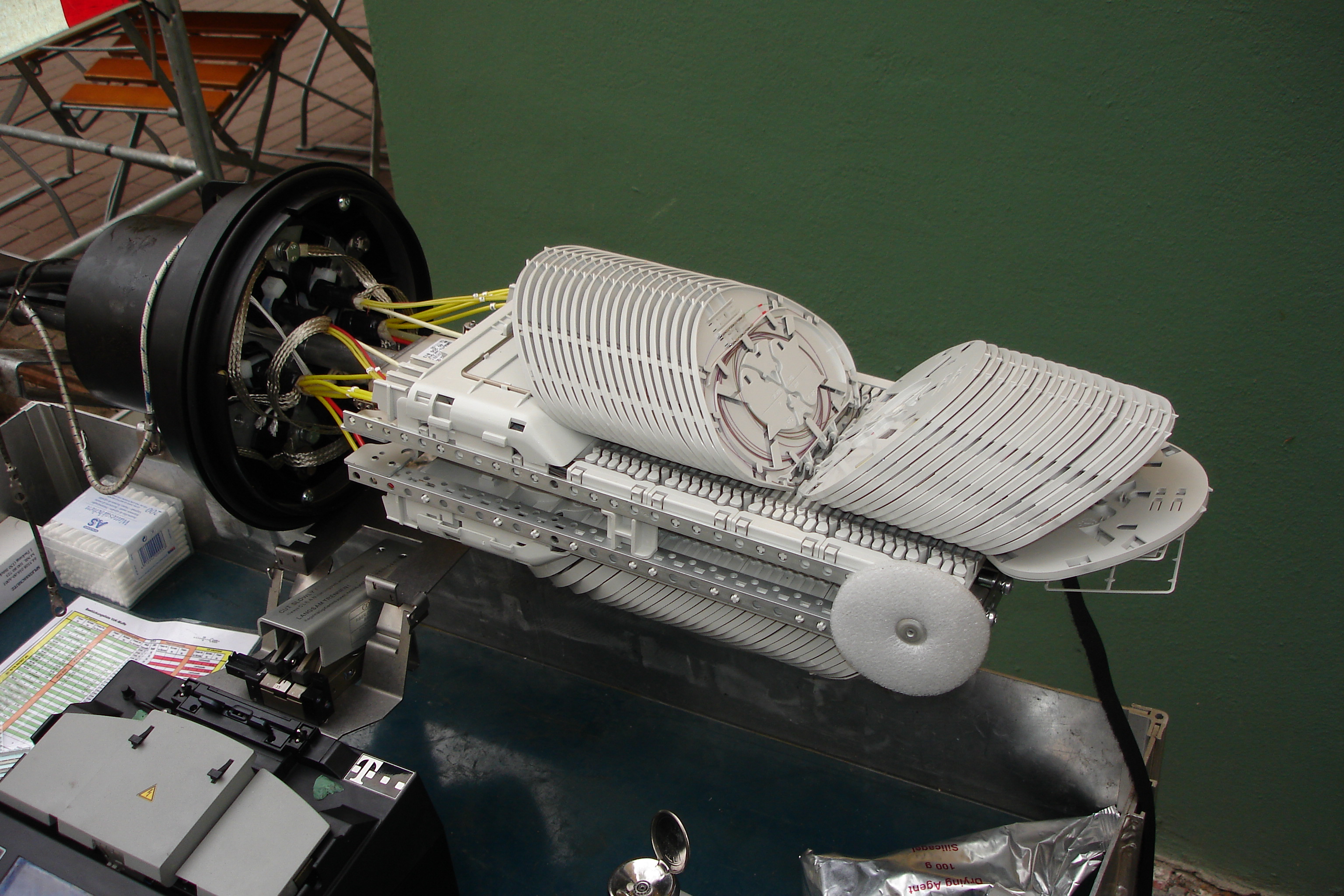Mechanical splice on:
[Wikipedia]
[Google]
[Amazon]
A mechanical splice is a junction of two or more
 There are several designs in use for mechanical splicing, varying based on the method of fiber alignment; four common methods, according to the Fiber Optic Association, are the capillary tube, V-groove, elastometric, and rotary splice.
* A capillary tube splice aligns the optical fibers inside of a glass tube, connecting them with a simple adhesive that matches the
There are several designs in use for mechanical splicing, varying based on the method of fiber alignment; four common methods, according to the Fiber Optic Association, are the capillary tube, V-groove, elastometric, and rotary splice.
* A capillary tube splice aligns the optical fibers inside of a glass tube, connecting them with a simple adhesive that matches the
How To Splice Fiber Optic Cable Using Mechanical Splice Kit
Picture and Video Instructions Fiber optics {{Optics-stub
optical fiber
An optical fiber, or optical fibre in Commonwealth English, is a flexible, transparent fiber made by drawing glass ( silica) or plastic to a diameter slightly thicker than that of a human hair
Hair is a protein filament that grows ...
s that are aligned and held in place by a self-contained assembly (usually the size of a large carpenter's nail). The fibers are not permanently joined, just precisely held together so that light
Light or visible light is electromagnetic radiation that can be perceived by the human eye. Visible light is usually defined as having wavelengths in the range of 400–700 nanometres (nm), corresponding to frequencies of 750–420 t ...
can pass from one to
another. This impermanence is an important advantage over fusion splicing, as splice loss, the amount of power that the splice fails to transmit, can be better measured and prevented.
Designs and variations
 There are several designs in use for mechanical splicing, varying based on the method of fiber alignment; four common methods, according to the Fiber Optic Association, are the capillary tube, V-groove, elastometric, and rotary splice.
* A capillary tube splice aligns the optical fibers inside of a glass tube, connecting them with a simple adhesive that matches the
There are several designs in use for mechanical splicing, varying based on the method of fiber alignment; four common methods, according to the Fiber Optic Association, are the capillary tube, V-groove, elastometric, and rotary splice.
* A capillary tube splice aligns the optical fibers inside of a glass tube, connecting them with a simple adhesive that matches the refractive index
In optics, the refractive index (or refraction index) of an optical medium is a dimensionless number that gives the indication of the light bending ability of that medium.
The refractive index determines how much the path of light is bent, ...
of the fibers. This setup allows for manual adjustments and is often a component in the more complex rotary splice.
* A V-groove plate can accommodate multiple fibers simultaneously, holding the individual fibers in separated grooves on the plate that maintain alignment. This method is popular for its simplicity and long-term effectiveness.
* An elastometric splice is similar to the V-groove in that it uses lined plates to keep the fibers aligned, but it uses a soft elastomer
An elastomer is a polymer with viscoelasticity (i.e. both viscosity and Elasticity (physics), elasticity) and with weak intermolecular forces, generally low Young's modulus and high Deformation (mechanics), failure strain compared with other mate ...
polymer rather than a harder material like a metal plate. The softer material allows a variety of fibers with different diameters to be used.
* A rotary splice is a more costly and complex connector which uses rotating glass ferrule
A ferrule (a corruption of Latin ' "small bracelet", under the influence of ' "iron") is any of a number of types of objects, generally used for fastening, joining, sealing, or reinforcement. They are often narrow circular rings made from me ...
s to minimize splice loss. This is largely considered unpopular due to the increased amount of labor involved, as maintaining minimal splice loss requires frequent manual adjustment.
Other than the method of alignment, all forms of optical fiber splicing, including non-mechanical fusion splicing, involve an essentially identical process of cleaving and testing. Good cleaving, by creating a flat surface for fibers to be aligned and connected on, reduces splice loss in all forms of optical fiber splicing.
See also
* Fusion splicing *Optical splice
In telecommunications, a line splice is a method of connecting electrical cables (electrical splice) or optical fibers (optical splice).
Splices are often housed in sleeves to protect against external influences.
Splicing of copper wires
T ...
* Cleave (fiber)
*Optical fiber connector
An optical fiber connector joins optical fibers, and enables quicker connection and disconnection than splicing. The connectors mechanically couple and align the cores of fibers so light can pass. Better connectors lose very little light due ...
References
Further reading
How To Splice Fiber Optic Cable Using Mechanical Splice Kit
Picture and Video Instructions Fiber optics {{Optics-stub